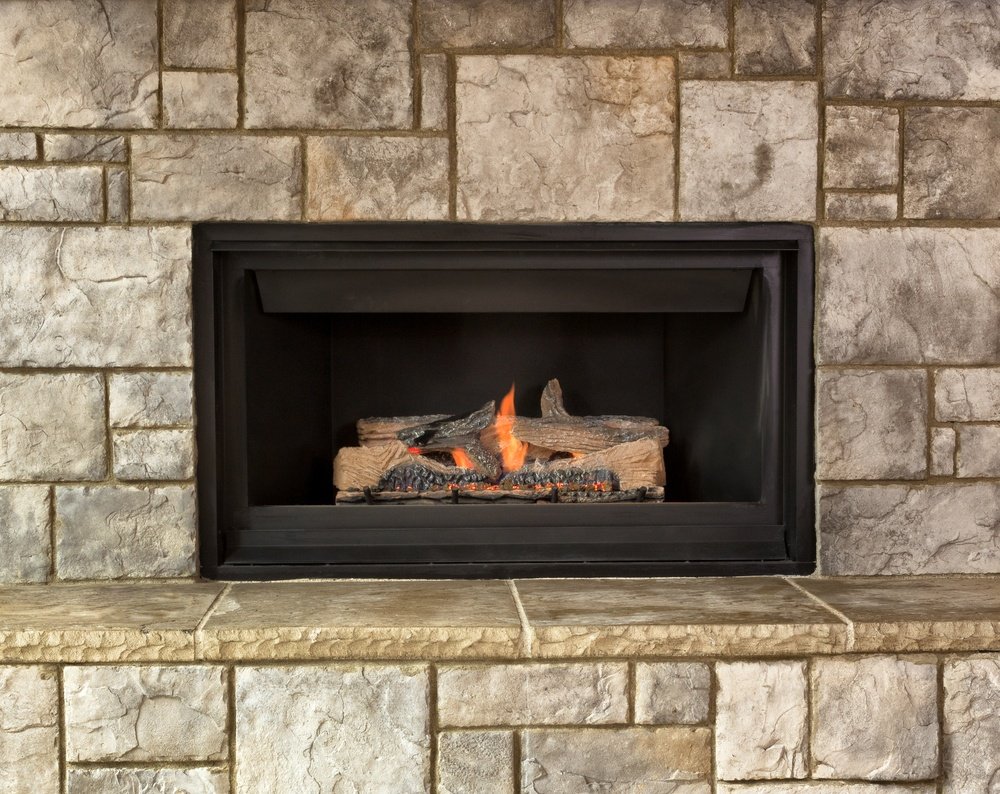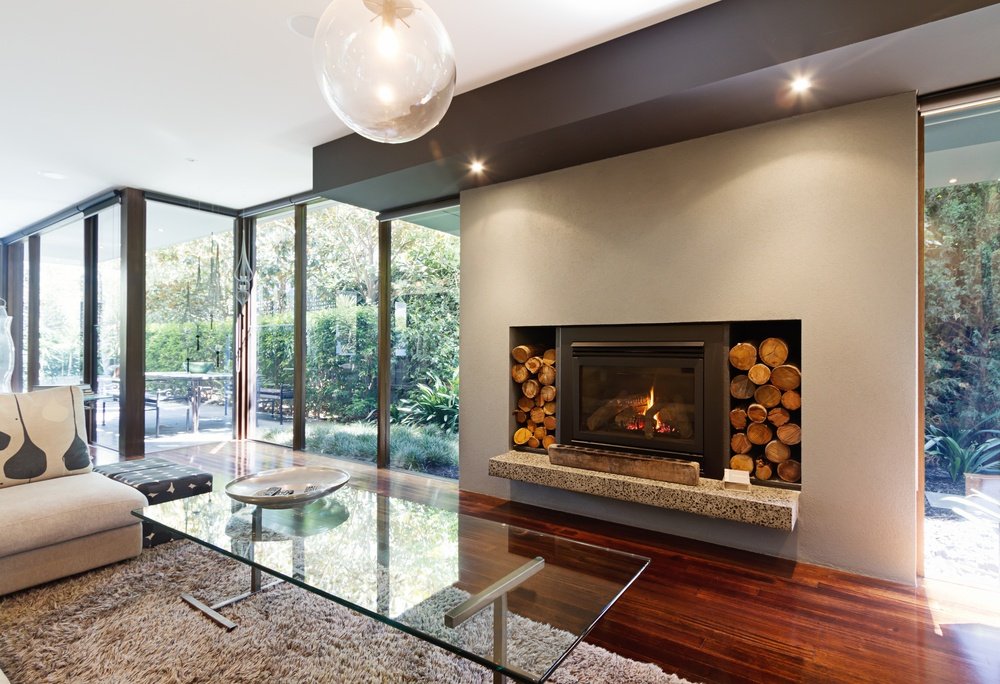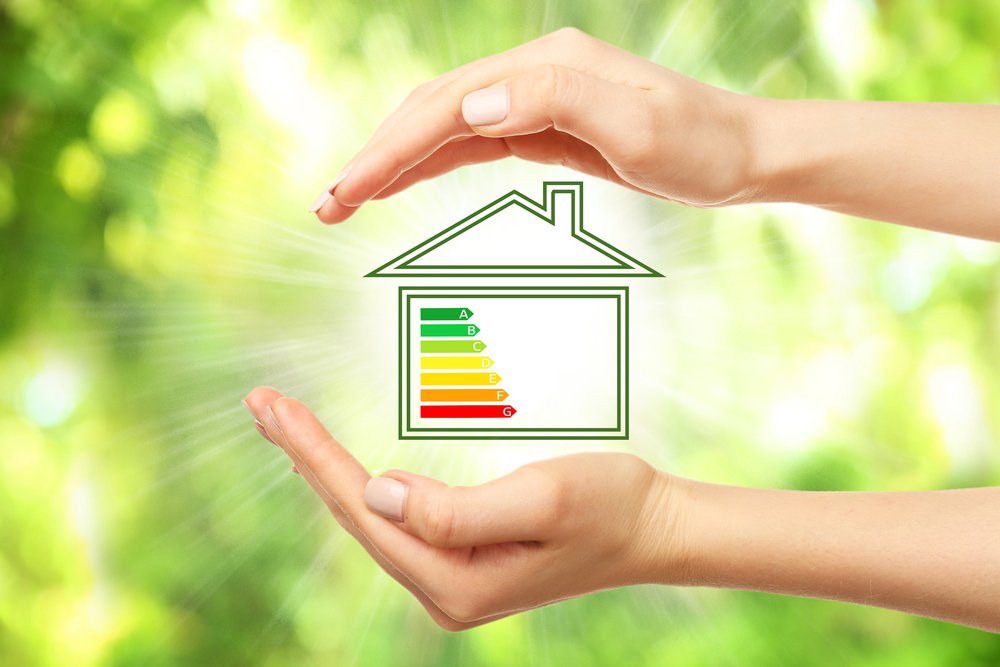A Guide to Energy Efficient Fireplaces For Cold Weather

Who doesn’t want to cuddle up in front of a warm fire during the winter months? The National Association of Home Builders lists fireplaces as one of the top features that new homeowners want. Old-school wood-burning fireplaces have gotten a reputation as energy wasters, sending up to 8 percent of your home’s heat outside before it ever reaches the room. That’s a lot of money wasted on valuable fuel!
Luckily for energy-conscious homeowners, plenty of new fireplace models are energy efficient; and there are ways you can upgrade your home’s existing fireplace for efficiency if you aren’t looking to replace it completely. Just in time to beat the winter chill, here’s a complete guide to energy efficient fireplaces for cold weather.
Natural Gas Fireplaces
Natural gas is the most popular choice for fireplaces among homeowners. Natural gas is more eco-friendly, less expensive, and more energy efficient, making it the ideal choice for long-term heating. Most impressively, natural gas fireplaces release up to 99 percent fewer emissions than traditional wood fireplaces.
If a traditional look is important to you, then you can seek out an open style natural gas fireplace for that roaring fire that’s perfect for sitting around with friends and family. However, sealed gas fireplaces are most efficient at heating large spaces, making them the best choice for energy-conscious homeowners.
When you choose a natural gas fireplace, expect to spend around $60 annually on fuel, a fraction of the cost of other heating sources.
Energy Efficient Fireplaces with Open Wood Design

There’s something aesthetically pleasing about a traditional open wood style fireplace. It’s the type of fireplace you see in Americana art prints, or that you remember from your grandparents’ cabin when you were a child.
Unfortunately, open wood fireplaces have gotten a bad rap over the years. You need to refuel them often, they burn through wood too quickly, they’re energy-wasters, and they don’t circulate heat as well as natural gas fireplaces. The average wood fireplace costs about $190 annually to run, making it a bit more expensive than your average gas fireplace.
No worries: you can choose an open wood fireplace with a shallow firebox, also known as a Rumford design fireplace. This shallow design encourages hot air to circulate into the room, rather than up the chimney.
Convert Your Fireplace with Wood-Burning Fireplace Inserts
If you’re looking to upgrade your existing fireplace to make it more energy efficient rather than buy a brand-new fireplace, then you’re in luck. Fireplace inserts are easy to install into open wood-burning fireplaces, and they give you a higher level of control over the fire’s intensity. More heat makes its way into the room and less of it disappears up the chimney, saving you money on fuel.
Need to increase heat efficiency even further? Adding glass doors to your wood-burning fireplace encourages heat to stay where you need it, and you can still enjoy a great view of the roaring fire.

There’s no single “right” choice when it comes to choosing energy efficient fireplaces for the home. We recommend natural gas fireplaces when ultimate efficiency is a high priority. Rumford design fireplaces are a good compromise when you want to preserve the aesthetic or the tradition of burning wood, but they still cost significantly more than the average natural gas fireplace. While you’re busy making a decision, try looking into other ways to bring energy efficiency to the home: the fireplace is just the first step.


